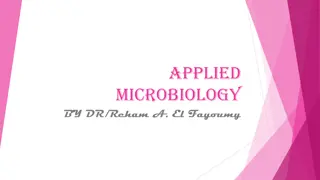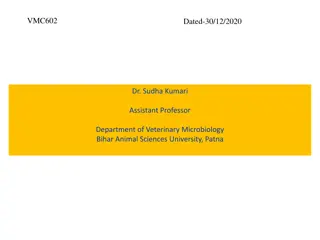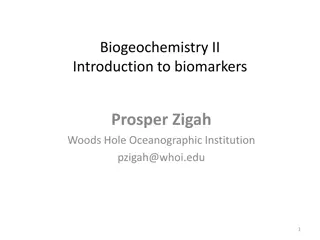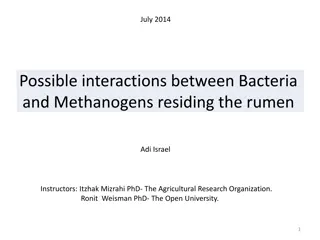Understanding Applied Microbiology: Insights into Microbial Diversity and Cell Organization
Applied Microbiology focuses on harnessing the capabilities of microorganisms for the production of beneficial products like medicines, vaccines, and biotechnological advancements. This field explores the intricate interactions between prokaryotic and eukaryotic organisms, emphasizing their pivotal
0 views • 23 slides
Exploring the Six Kingdoms of Life
Delve into the fascinating world of the six kingdoms – Archaea, Eubacteria, Protista, Fungi, Plantae, and Animalia. Discover their unique characteristics, reproduction methods, cell types, food sources, and example organisms. From extremophiles in volcanic vents to ancient trees that live for cent
1 views • 9 slides
Exploring the Thermophilic Organisms: Thermoplasma Genus
The Thermoplasma genus belongs to Archaea and thrives in acidic, high-temperature environments. These prokaryotic organisms lack a defined nucleus and utilize sulfur and organic carbon for respiration. They possess a unique membrane composition, allowing them to survive in extreme conditions. Specie
0 views • 12 slides
Advanced Biomarker Analysis in Biogeochemistry Studies
In biogeochemistry research, advanced analytical techniques are utilized to isolate and separate organic matter, focusing on major carbon pools in bodies of water like Lake Superior. Biomarkers such as fatty acids and specific compounds are identified as indicators for various microbial processes, i
0 views • 11 slides
Interactions Between Bacteria and Methanogens in the Rumen
The rumen, an anaerobic fermentation chamber in ruminant animals, houses a diverse microbial community including bacteria, fungi, protozoa, methanogenic archaea, and phages. Methanogens play a crucial role in methane production using fermentation end products. Research aims to explore evidence of in
0 views • 21 slides
Exploring Molecular Biology and Cell Science
Molecular biology delves into the study of biology at the molecular level, focusing on gene structure and functions to comprehend hereditary traits, genetic variation, and gene expression patterns. Cells, the fundamental units of life, vary in shape and function but share basic structures. The Three
0 views • 31 slides
Exploring the Diversity of Life: A Journey through Different Domains and Kingdoms
Delve into the fascinating world of biological diversity, from the three domains of Bacteria, Archaea, and Eukaryota to the various kingdoms within Eukaryotas like Protists and Fungi. Discover the unique characteristics and habitats of each type of organism, highlighting the importance of understand
0 views • 11 slides






